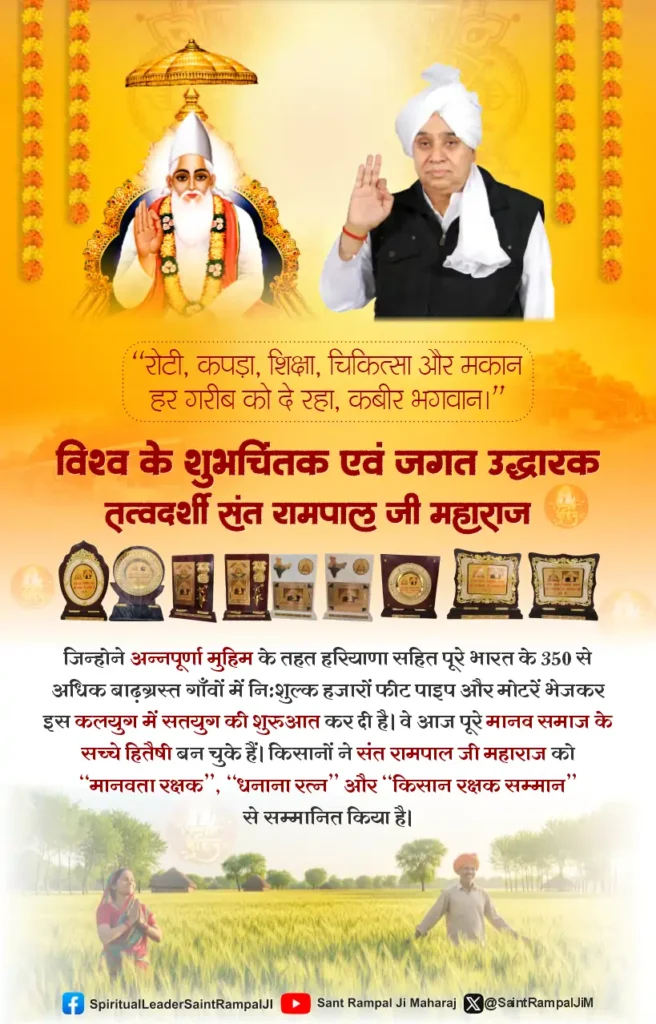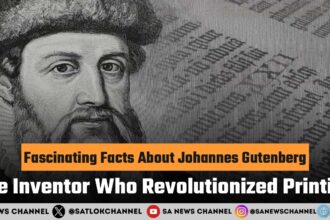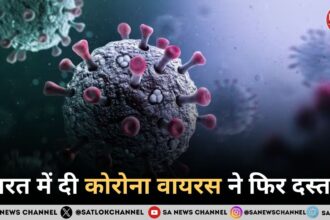For most of human history, our world was haunted by invisible phantoms. A mysterious ailment could sweep through a city, leaving devastation in its wake, attributed to divine wrath or foul “miasmas” rising from the swamps. A simple cut could fester and kill, for reasons no one understood. Even the most basic biological magic, like the leavening of bread, was a baffling chemical curiosity. We lived our lives completely unaware that we were not alone, that we were in fact surrounded and inhabited by a thriving, bustling universe of life too small to see.
This is the story of how we pulled back the curtain on that universe. It’s a tale not of grand designs, but of keen eyes, insatiable curiosity, and a series of brilliant accidents that revealed the microbial world, the true, unseen architects of our health, our diseases, and our planet.
A World Born from Nothing, or Whispers of an Invisible World
Before we could discover microbes, we first had to overcome a fundamental, and seemingly logical, misunderstanding about life itself: the theory of spontaneous generation. For centuries, it was common sense. If you left a piece of meat out, maggots would appear. If you left a pile of rags and wheat in a corner, mice would eventually scurry out. Life, it seemed, could simply arise from non-living matter. This belief, held since the time of Aristotle, explained many natural phenomena, leaving little room for the idea of invisible creatures.
Yet, whispers of a different reality existed. Ancient Jain scriptures in India spoke of tiny, unseen beings. The Roman scholar Marcus Terentius Varro warned against building homesteads near swamps, not because of bad air, but because “there are bred certain minute creatures which cannot be seen by the eyes, which float in the air and enter the body through the mouth and nose and there cause serious diseases.” These were fleeting sparks of intuition in a world of darkness. For a true revelation, humanity needed a new way to see.
A New Window to a New World
The 17th century was a time of explosive scientific inquiry. As astronomers like Galileo were building telescopes to gaze into the vastness of space, other inventors were turning lenses inward, to the infinitesimally small.
In 1665, a brilliant and versatile English scientist named Robert Hooke published a stunning book, Micrographia. Using a compound microscope he had built himself, Hooke presented the public with exquisitely detailed drawings of the things he saw, from the eye of a fly to the edge of a razor. While examining a thin slice of cork, he noticed a honeycomb-like structure of tiny, empty boxes. Reminded of the small rooms in a monastery, he called them “cells.” Hooke had discovered the building blocks of life, but the rooms he saw were empty. He had built the house, but had yet to meet its inhabitants.
The man who would do that was not a renowned scientist, but a humble draper from Delft, Holland. Antony van Leeuwenhoek was a man obsessed with quality. To inspect the threads of his fabrics, he taught himself to grind and polish lenses, creating simple, single-lens microscopes of astonishing power for the time, some magnifying objects over 200 times. His curiosity soon extended beyond fabrics.
One day, he placed a drop of lake water under his lens and was stunned by what he saw. The water was teeming with what he called “animalcules”, tiny creatures “swimming and playing” in their microscopic world. He found them everywhere: in rainwater, in his own saliva, and in the plaque scraped from his teeth. In a letter to London’s Royal Society, he wrote with wonder about the “unbelievably great number” of living things in his own mouth. Leeuwenhoek, the fabric merchant, had accidentally opened a peephole into a new universe. He was the first human in history to knowingly witness bacteria and other microorganisms. He had discovered an entirely new form of life.
The Great Debate: Life from Life
Leeuwenhoek’s “animalcules” threw a wrench into the works of spontaneous generation. If these creatures were alive, where did they come from? Did they, too, just appear from nothing? The debate raged.
An Italian scientist, Lazzaro Spallanzani, put the theory to the test in the 18th century. He boiled broth in two flasks, killing any life within. He left one open to the air and hermetically sealed the other. Microbes grew only in the open flask. It was strong evidence, but critics argued that sealing the flask cut off the “vital force” in the air that was necessary to create life. The debate remained unsettled.
It took the genius of a French chemist, Louis Pasteur, to settle the matter once and for all in the 1860s. Pasteur was investigating a practical problem: what was causing wine and beer to spoil? He suspected Leeuwenhoek’s microbes were the culprits. To prove that these microbes came from the air and didn’t spontaneously generate, he devised one of the most elegant experiments in scientific history.
He filled long-necked flasks with broth and then heated the necks, bending them into an “S” shape. He then boiled the broth to sterilize it. Air could still freely enter the flask, satisfying the critics, but the curves of the “swan neck” acted as a trap, catching any airborne dust and microbes. The result was astounding: the broth remained sterile indefinitely. But if he broke the neck off, or tilted the flask so the broth touched the trapped dust, it quickly became cloudy with microbial growth.
The verdict was in: life only comes from life. Pasteur had not only disproved spontaneous generation but had also solved an ancient mystery. It was living yeast, a microorganism, that was responsible for the fermentation that made beverages alcoholic and, more relevantly for every household, caused bread batter to rise by producing bubbles of carbon dioxide gas. The “magic” of baking was, in fact, biology.
The Germ Theory Revolution
If microbes were in the air, in the water, and in our food, it was a short leap to a terrifying new idea: could they also be the cause of disease? This was the foundation of the germ theory of disease, and it would revolutionize medicine.
The transition was not easy. In the 1840s, a Hungarian doctor named Ignaz Semmelweis noticed that women were dying of childbed fever at an alarming rate in a hospital ward attended by doctors who came straight from autopsies. He theorized that “cadaverous particles” were being transferred to the mothers and insisted that doctors wash their hands in a chlorine solution. The death rate plummeted. Yet, his idea was met with ridicule from the medical establishment, who were offended by the suggestion they were harming their patients. Semmelweis died a broken man, his discovery largely ignored.
Also Read: The Ultimate List of Best Tech Conferences To Attend
It was Pasteur’s work that gave the germ theory the backing it needed. Inspired by Pasteur, a British surgeon named Joseph Lister pioneered antiseptic surgery, using carbolic acid to clean wounds and surgical instruments. Infections and death rates fell dramatically.
The final, definitive proof came from a meticulous German physician, Robert Koch. While Pasteur was the grand theorist, Koch was the master detective. He developed a rigorous scientific method to hunt down specific microbial culprits. Known as Koch’s Postulates, his four criteria provided a framework to prove that a specific microbe caused a specific disease. Using this method, his laboratory identified the bacteria responsible for anthrax, tuberculosis, and cholera, some of the most feared killers of the 19th century. The invisible phantoms finally had a face.
Accidental Miracles and Invisible Foes
The ability to identify germs was one thing; the ability to fight them was another. Here, too, observation and accident played a starring role.
Long before germ theory, in the late 18th century, an English country doctor named Edward Jenner noticed a curious piece of local folklore: milkmaids who contracted cowpox, a mild disease from cattle, never seemed to get the deadly scourge of smallpox. Intrigued, Jenner put this observation to the test in 1796. He took material from a cowpox sore on a milkmaid and inoculated an eight-year-old boy. The boy developed a mild fever but quickly recovered. Later, Jenner exposed the boy to smallpox, and he remained healthy. He had developed immunity. Without knowing what a virus was, Jenner had created the world’s first vaccine, a breakthrough that would save countless millions of lives.
Over a century later, another stroke of luck would change medicine forever. In 1928, a Scottish bacteriologist named Alexander Fleming returned to his London laboratory after a holiday. He was annoyed to find that one of his petri dishes growing Staphylococcus bacteria had been contaminated by a common blue-green mold. He was about to toss it out when he noticed something extraordinary. In a clear ring around the mold, all the bacteria were dead.
Pure serendipity had led him to a world-changing discovery. The mold, a strain of Penicillium, was producing a substance that was lethal to bacteria. He named it penicillin. This accidental discovery ushered in the age of antibiotics, turning previously fatal infections into treatable conditions. The full, fascinating story of this fortunate accident reveals How a Lab Mistake Led to the World’s First Antibiotic: Penicillin.
The 20th century also revealed an even smaller, more enigmatic foe: viruses. These infectious agents were so tiny they passed right through the finest filters and could only be seen with the invention of the electron microscope. They represented a new frontier in the ongoing battle against disease.
The Microbial Frontier Today
Our relationship with the microbial world has entered a new phase. After a century spent trying to kill them, we are now beginning to understand their vital importance. We now know that our bodies are home to trillions of microbes, collectively called the microbiome that are essential for digestion, immune system development, and even mental health. We are not just individuals; we are walking ecosystems.
This new understanding has opened up incredible possibilities. We are now harnessing microbes for:
- Biotechnology: Engineering bacteria to produce biofuels, medicines, and biodegradable plastics.
- Bioremediation: Using microbes to clean up oil spills and industrial pollutants.
- Agriculture: Developing microbial soil treatments to enhance crop growth and reduce the need for chemical fertilizers.
However, this new era also comes with a grave warning. The overuse of Fleming’s miracle discovery has led to one of the greatest threats to global health: antibiotic resistance. Bacteria are evolving, and our wonder drugs are losing their effectiveness. The race is on to find new ways to combat these evolving superbugs. To move beyond this history and understand the challenges and incredible potential of today’s scientific frontier, you can continue by Exploring Microbiology : A Journey Through the Hidden World of Microorganisms.
Unseen Life and Unseen Karma
The revelation of a microscopic world, teeming with life in every drop of water and speck of dust, offers a profound parallel to a spiritual truth taught by Sant Rampal Ji Maharaj. The scientific discovery that we are constantly interacting with microorganisms gives tangible form to the ancient teaching of Kabir Ji: that simply by living and walking on this Earth, a soul inevitably incurs sin (paap) by unintentionally harming countless living beings.
This unavoidable act of destroying microscopic life, however unintentional, accumulates a heavy karmic debt. The consequences of this debt manifest as the “Teen Taap” , the three forms of suffering (physical, divine, and material) that afflict human existence. According to the true spiritual knowledge (Sat-Gyaan), this deep-rooted karma cannot be absolved through conventional rituals or personal effort. Only Satbhakti, the true worship of the Supreme God, as prescribed in holy scriptures like the Vedas and received from a Tatvadarshi Guru (True Spiritual Teacher) possesses the power to neutralize these karmic accounts.
Just as the brilliant minds of Leeuwenhoek and Fleming were the human instruments for discovering the microbial world, this spiritual lens sees the unseen hand of divine will. The Supreme God orchestrates these moments of discovery, allowing a prepared mind to perceive a hidden reality and receive worldly acclaim. For the devotee of Satbhakti, however, a greater discovery is revealed: the path to liberation (moksha). This grace does not demand a heavy price but rather frees the soul from the endless cycle of suffering caused by both seen and unseen actions.
The Takeaway
The journey into the microbial world began not with a grand plan, but with sparks of curiosity and strokes of luck. From Leeuwenhoek’s “animalcules” in a drop of water to Fleming’s contaminated petri dish, a series of accidental discoveries dismantled centuries of superstition, replacing phantoms and miasmas with the tangible science of germ theory. This revelation armed humanity with vaccines and antibiotics, saving countless lives and forever changing our destiny.
Today, our exploration continues on a new frontier. We’ve moved beyond simply fighting these unseen architects to understanding their vital role within us as our microbiome and harnessing their power for biotechnology. This journey teaches us that the most profound truths often lie just beyond our sight. Whether viewed through the lens of a microscope or the perspective of spiritual knowledge, the unveiling of this invisible world reveals a deeper reality. It reminds us that our quest to understand the unseen, be it a microbe or the subtle laws of karma, is the most essential human adventure.
FAQs
1. What are microorganisms?
Ans:- Microorganisms (or microbes) are living things too small to be seen without a microscope. They include bacteria, fungi, viruses, and protists, and are found everywhere on Earth.
2. Who discovered the first microorganisms?
Ans:- Antony van Leeuwenhoek, born in the Netherlands in 1632, was a Dutch tradesman and self-taught scientist renowned for his pioneering work in microscopy and microbiology. He is often called the “father of microbiology” due to his groundbreaking observations of microorganisms, including protists and bacteria using his homemade microscopes, he was the first to see these tiny life forms, which he called “animalcules.”
3. Who are the three fathers of microbiology?
Ans:- The three fathers are Antony van Leeuwenhoek (first observed microbes), Louis Pasteur (disproved spontaneous generation), and Robert Koch (proved the germ theory of disease).
4. Who coined the term microorganism?
Ans:- The term ‘microbes’ has been around since the 1850s, however the French surgeon Charles-Emmanuel Sédillot coined the term microorganism in 1878.
5. Who is the mother of microbiology?
Ans:- Fanny Hesse is widely recognized as the “mother of microbiology” due to her pioneering work in developing agar as a growth medium for microorganisms. Her suggestion to use agar, a substance she used in cooking, instead of gelatin, was a crucial step in making it possible to cultivate and study bacteria effectively.









